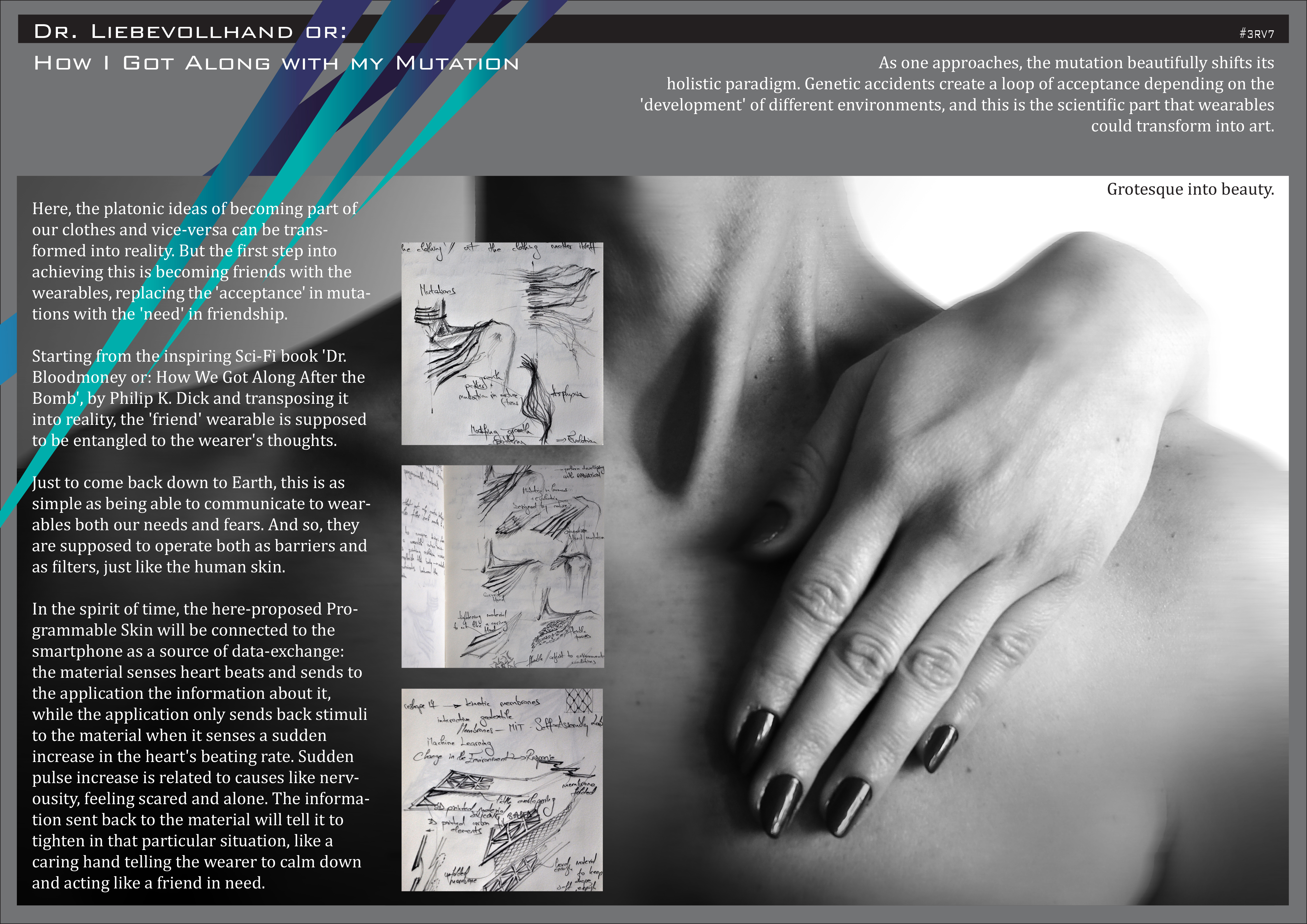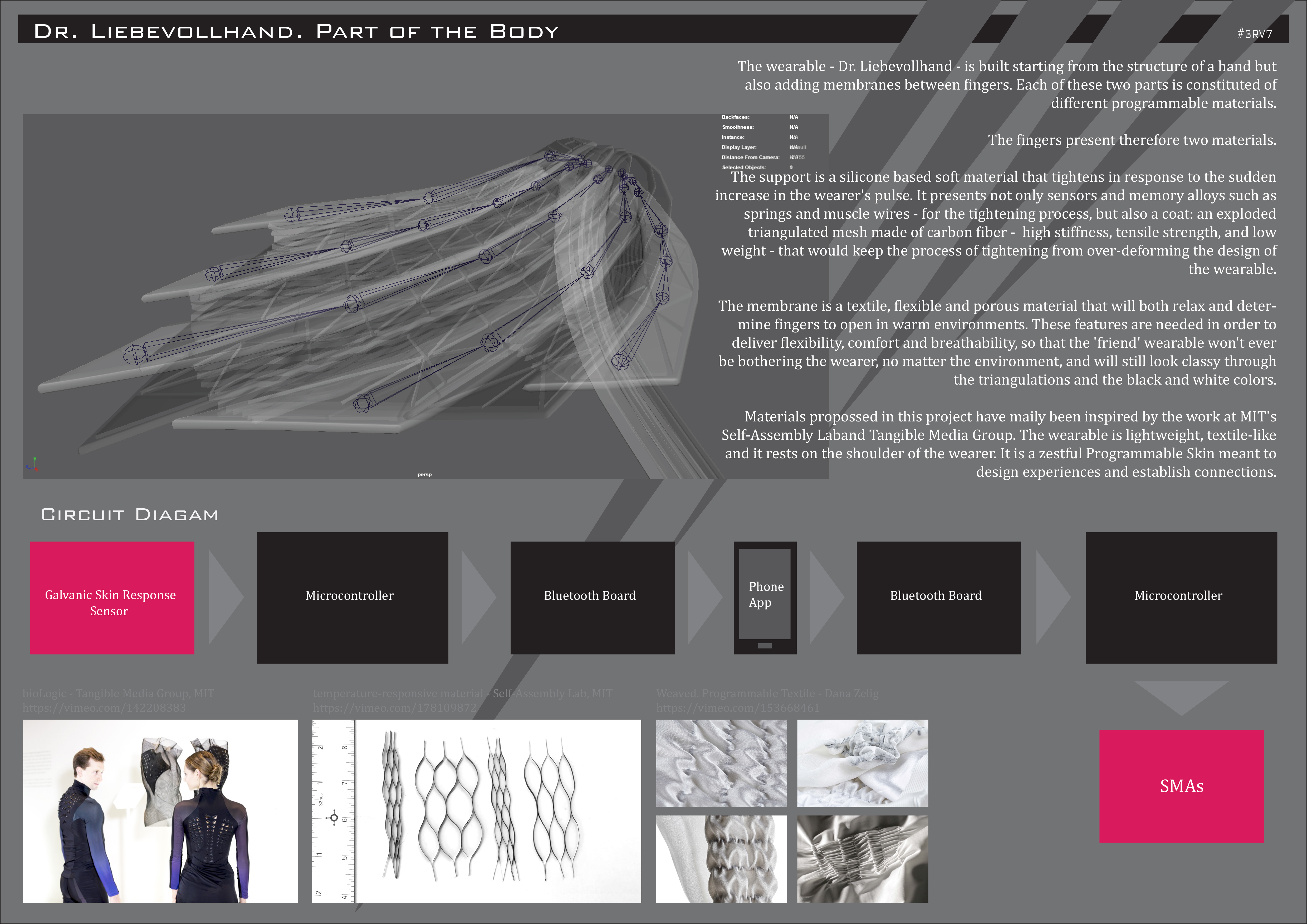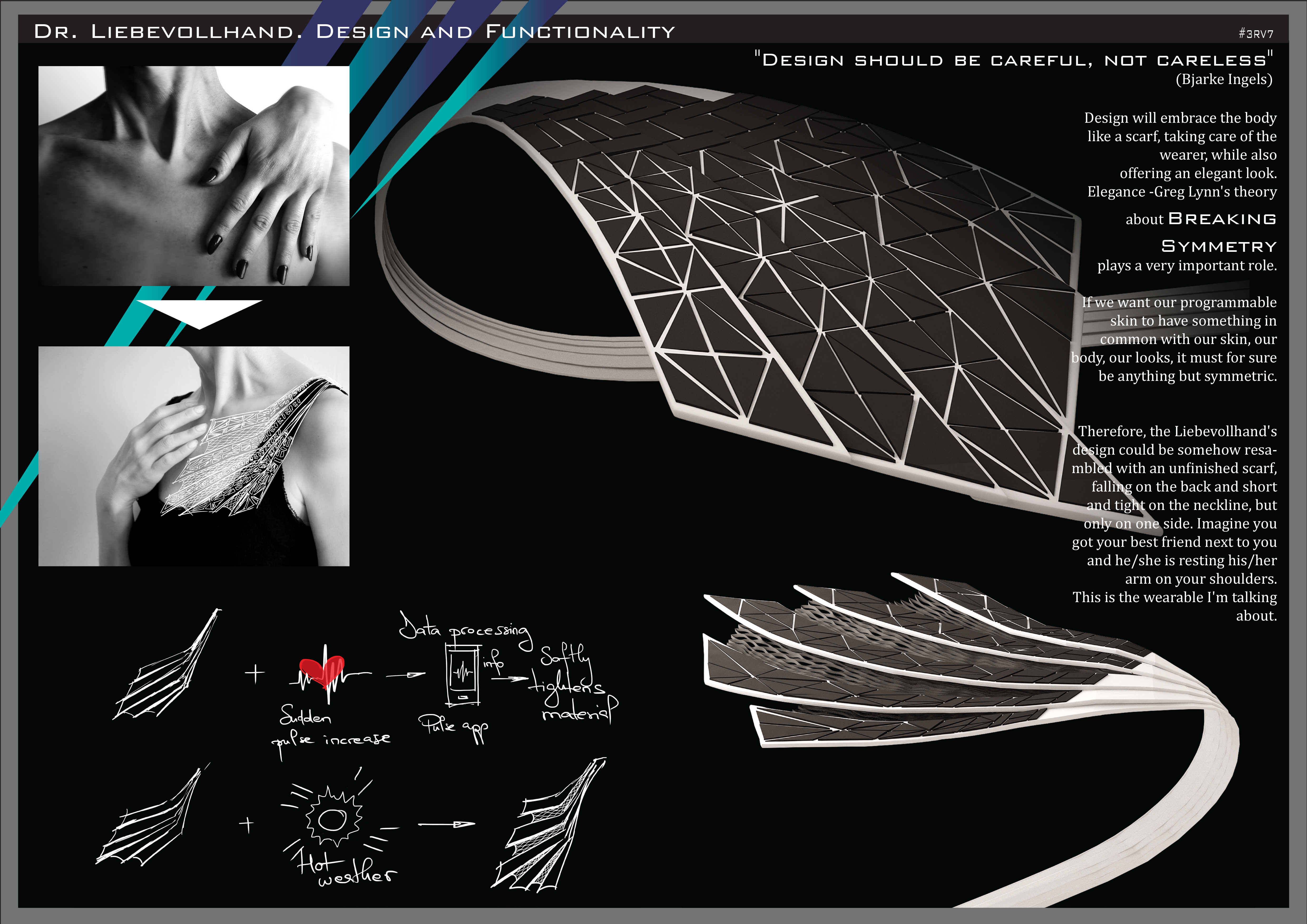#3RV7
RESHAPE17 | programmable skins
Project Description
Project Detail
Dr. Liebevollhand or: How I Got Along with my Mutation
As one approaches, the mutation beautifully shifts its holistic paradigm. Genetic accidents create a sense of acceptance depending on the ‘development’ of different environments, and this is the scientific part that wearables could transform into art. Grotesque into beauty.
Here, the Platonic ideas of becoming part of our clothes and vice-versa can be transformed into reality. But the first step into achieving this is becoming friends with the wearables, replacing the ‘acceptance’ in mutations with the ‘need’ in friendship. Starting from the inspiring Sci-Fi book ‘Dr. Bloodmoney or: How We Got Along After the Bomb’, by Philip K. Dick and transposing it into reality, the ‘friend’ wearable is supposed to be entangled to the wearer’s thoughts.
Just to come back down to Earth, this is as simple as being able to communicate to wearables both our needs and fears. And so, they are supposed to operate both as barriers and as filters, just like the human skin.
The here-proposed Programmable Skin will be connected to the smartphone as both a data-tracker (heart beat monitor) and a source of data-exchange: a Galvanic skin response (GSR) sensor placed on the back of materials senses a change in the electrical resistance of skin caused by emotional stress and sends – through a microcontroller and a bluetooth circuit board – information to the smartphone App. The App sends back stimuli to muscle wires housed within the fabric and will respond to collected information about the user’s sudden increase in their heart rate. Sudden pulse increase is related to causes like nervousity, feeling scared and alone. Information sent back to actuators embedded in the material will tell it to tighten in that paticular situation, like a caring hand telling the wearer to calm down and acting like a friend in need.
The wearable – Dr. Liebevollhand – is built starting from the structure of a hand, but also adding membranes between fingers. Each of these two parts is constituted of different programmable materials. The fingers present therefore two materials. The support is a silicone based soft material that tightens in response to the sudden increase in the wearer’s pulse. It presents not only sensors and memory alloys such as springs and muscle wires – for the tightening process, but also a coat: an exploded triangulated mesh made of carbon fiber – high stiffness, tensile strength, and low weight – that would keep the process of tightening from over-deforming the design of the wearable. The membrane is a textile, flexible and porous material that will both relax and determine fingers to open in warm environments. These features are needed in order to deliver flexibility, comfort and breathability, so that the ‘friend’ wearable won’t ever be bothering the wearer, no matter the environment, and will still look classy through the triangulations and the black and white colors.
Therefore, the manufacturing process is not a very difficult one: 3D printing for the carbon-fiber triangulations, laser cut for the silicone based material representing the ‘fingers’ and the fabrication of heat-active auxetic materials in the case of temperature-responsive materials made by MIT’s Self-Assembly Lab. Materials can be ‘assembled’ together mainly through sewing. Expenses are hardly bound to exeed 200 euros.
#3RV7
LIEBEVOLLHAND





